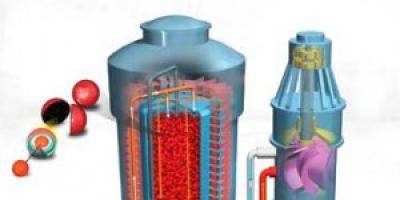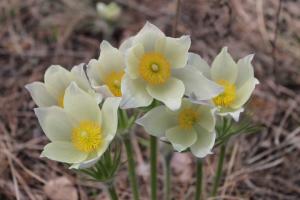Hydrangea, or hydrangia, is a tree-like flowering shrub that belongs to the Hydrangeaceae family. It is difficult to remain indifferent at the sight of these beautiful large inflorescences. This family includes about a dozen species of shrubs, vines or small trees.
Description of culture
Hydrangia appeared in England and France at the beginning of the 14th century and was represented by only 2 species: white and scarlet.
The hydrangea bush can grow up to 3 meters in height, but there is a vine-like species that can reach a length of 30 m.
In Europe, only deciduous hydrangias are grown.
Hydrangea
Types of hydrangeas
The following plant species are found:
- large-leaved;
- paniculata;
- tree-like;
- creeping.
The flowering period lasts from late spring to late autumn.
There are two types of flowers in inflorescences:
- fertile, or small-bearing;
- sterile or sterile.
Fertile ones are in the center of the inflorescence, and infertile ones are at the edges. Some species have inflorescences containing only fertile flowers. There are two types of inflorescences on a hydrangea bush: paniculate and corymbose.
Hydrangeas are grown with inflorescences of the following colors:
- white;
- blue;
- purple;
- lilac;
- pink;
- red.
The color of the inflorescences depends not only on the variety, but also on the composition of the soil on which the bush grows. On acidic soils, the inflorescences will be blue, on neutral soils (pH 5.5) - beige, on alkaline soils - pink or lilac. Blue color Hydangia flowers growing in acidic soil are given the benefit of aluminum compounds found in acidic soils.
Garden hydrangea
The hydrangea fruit has the form of a box containing from 2 to 5 separate chambers, each of which contains small seeds.
One of the most popular types of hydrangia is the large-leaved species, the inflorescences of which have sterile large flowers. About 600 varieties of this shrub have been bred.
Attention! Hydrangea – poisonous plant, therefore it is prohibited to use it for food.
Features of cultivation
Hydrangea grows best in acidic soils. For better penetration of air into the soil, the soil around the bush must be loosened periodically.
Hydrangea does not grow well in sunny areas, so it is better to choose a planting location in shade or partial shade. In a sunny area, the plant develops more slowly and the flowers become smaller.
Hydrangea does not grow well in sunny areas
Watering hydrangia should be done with settled or rainwater, since the shrub does not tolerate lime well. Watering time is morning or evening. This will allow the plant to avoid sunburn. Once a week, at least 2 buckets of water are poured under an adult bush.
Planting is usually carried out in the spring when there is no night frost.
2-3 weeks before planting, dig a hole up to 0.5 m deep and with sides up to 0.7 m. Sod, leaf soil, sand and peat are poured into it in equal proportions. It is not recommended to prepare alkaline soil, since its alkalinity is a possible cause of hydrangea chlorosis. Next, mineral fertilizers and organic matter are added to the planting hole. The root collar of the seedling should be at ground level.
Hydrangea propagates by green cuttings.
Starting from 3-4 years, the bush is molded annually.
Why does hydrangea wither?
If the shrub is properly cared for, it will look luxurious throughout the entire growing season. If the technology for growing the plant is not followed, hydrangia may become ill.
What to do if hydrangea dries out
First you need to determine the cause of the disease. If the leaf dries, then the reasons for this may be:
- incorrect soil pH;
- direct sunlight;
- watering the plant with hard tap water;
- lack of moisture in the soil;
- insufficient or excessive amounts of microelements in the soil.
Incorrect soil composition
In order for the shrub to develop well, it must be fulfilled important condition– the soil can be acidic or moderately acidic. For hydrangea, the pH should be between 4.0-6.0. In the case of alkaline soil, the leaf will begin to dry out over the entire area.
Attention! The color of the plant's leaves depends on the acidity of the soil. The more sour it is, the more dark leaves has hydrangea.
If the soil is alkaline, then the acidity of the soil can be restored by watering with acidified water (for example, with the addition of lemon juice).
Insufficient plant nutrition
If the leaves turn black or yellow, then perhaps there is not enough iron or nitrogen in the soil.
During the flowering period it is necessary to feed hydrangea complex fertilizer, intended for flower plants.
Feeding shrubs with iron chelate
Also, a lack of microelements can occur in the spring, when hydrangea begins to actively develop. How to revive hydrangea in this case? To do this, you need to foliar feed the bush with iron chelate.
However, hydrangia responds poorly not only to a lack of fertilizers, but also to an excess of fertilizers. Therefore, after flowering is completed, it is necessary to reduce the dose of applied mineral fertilizers.
Excessive sunlight
One of the reasons why hydrangea leaves dry out is that the plant is not in the shade, but in the sun.
Hydrangea does not develop well in direct sunlight. Therefore, resuscitation consists of transplanting the plant into partial shade or creating artificial shade using a special shading mesh.
Excessive sunlight
If the bush is domestic and grows indoors, then it is best to place the pot on a western or eastern window. You also need to make sure that the leaf does not touch window glass. If the sheet touches the glass, the sun can burn it.
Insufficiently moist soil
Due to lack of moisture, the leaves of the bush will dry out over time.
Hydrangia is a moisture-loving plant, so regular watering will ensure beautiful flowers.
Increasing watering and mulching the soil will allow the street bush to be revived. If the bush is indoors, then you can use a humidifier. Instead, you can install a container near the flower into which water is periodically poured.
However, the plant also does not like excess moisture, as this contributes to the development of root rot.
Using hard water for irrigation
Tap water contains many impurities, including lime. And hydrangea is quite sensitive to them. Therefore, it is best to use settled water for irrigation. To do this, you can use special open containers, which are best placed in the sun. In this case, you can get warm and soft water for irrigation.
Errors during landing
One of the reasons why hydrangea leaves dry around the edges is mistakes that were made when planting the plant.
Damage to the root system
Hydrangea has a very delicate root system, so replanting the plant must be done very carefully, without damaging the small roots. Damage to them can lead to the fact that the bush will be difficult to take root and will hurt for a long time.
Attention! Buying a seedling is a very responsible matter. It is important to check the condition of the root system.
Also, do not cut the roots when planting. Roots should only be pruned if they are rotten, diseased, or damaged by insects. Rotten roots are dark brown, while healthy ones are white. The cut areas are treated with crushed activated carbon.
Better survival of the plant can be helped by watering with the addition of Zircon, which is performed once a week.
Mistakes when choosing a landing site
If the soil is not acidic, but alkaline or neutral, then the plant will have difficulty taking root. Therefore, in this case it is necessary to acidify the soil, otherwise the bush may dry out.
If the soil is not acidic, it will be difficult for the plant to take root.
If a garden is chosen for planting, it is important not to place the seedling in a draft; it is also necessary to protect it from sudden temperature changes and hypothermia.
Hydrangea diseases
What to do if hydrangea leaves wither? Perhaps the plant is sick. To choose the right treatment method, it is important to accurately determine the disease.
Dry blackening
If the edges of the leaf are covered with brown spots and become dry, this indicates that:
- the plant is watered with hard water;
- The leaf got sunburn.
Once spots appear, the foliage will wither and wither.
Wet blackening
The leaves darken and lose their elasticity. The reason for this may be:
- sudden changes in temperature;
- exposure to drafts of the place where the bush grows;
- excessive watering;
- heavy soil.
Why is garden hydrangea still withering? A possible reason is a fungal infection of the plant.
White rot
Fungal disease of roots. With this disease, the bush gradually dies, since the affected root system cannot provide the plant with the required amount of nutrients.
White rot
Symptoms:
- white, cotton-like coating on shoots;
- blackening of shoots.
Treatment
To treat the affected plant, fungicides Fitosporin, Copper Oxide, etc. are used.
Gray rot
Symptoms:
- The flower tissues become soft and watery;
- The affected parts of the plant die in a dry environment. They leave holes on the stems;
- In a humid environment, the affected areas become covered with a gray coating.
Treatment
Diseased areas are removed mechanically. Then domestic plants are treated with Chistotsvet, Fundazol or Skor. Garden views treated with Rovral Flo 255 SC every three weeks.
Septoria
Symptoms
The appearance of dark brown spots, up to 6 mm in size, on the leaves. The affected leaves gradually begin to dry out and die.
Treatment
Treatment with copper-containing preparations, for example, copper sulfate.
Powdery mildew
Symptoms
Formation of yellow-green spots on leaves. Gradually the spots darken and acquire a brown color. The back side of the leaf is covered with a purple or gray coating. Winter usually brings death to a sick plant.
Powdery mildew
Treatment
At the first symptoms of damage, the fungicide Fitosporin is used, and in advanced forms - Skor, Topaz or Chistotsvet.
Thus, when purchasing a seedling through a store or on the market, you need to make sure that the young plant is not susceptible to fungal disease.
Disease Prevention
Checking seedlings and proper plant care are the main prevention of diseases. Be sure to loosen the soil around the plant throughout the growing season.
In the spring, you can treat the plant with copper-containing preparations, for example, copper sulfate (100 grams per 10 liters of water). You can also use drugs Topaz, Fitosporin, etc.
Copper sulfate
At the end of spring it is necessary to apply nitrogen-containing fertilizers, in the summer – phosphorus-potassium fertilizers, and in the fall – phosphorus fertilizers.
How to save a wilted hydrangea
If the bush is dry, you can try to revive it. If the plant is a garden plant, then in the spring all frozen parts are removed. If the plant is affected by rot, then cutting is performed 1 cm below the affected part. The cut areas must be sprinkled with ash, activated carbon, etc. After trimming each affected area, the pruning shears are disinfected. The bush is treated with drugs, depending on the disease.
Wood ash for fertilizer
How to revive cut hydrangea? If a wilted flower is in a vase, then you need to take it out, cut off the lower part obliquely and place the plant in boiling water for 3-5 minutes. After the air bubbles stop coming out of the stem, you need to take out the plant, cut off the part that was in boiling water, and put the flower in cold water. After this, your vase will look elegant again.
Hydrangea dries in a pot at home
If a houseplant begins to disappear, you need to bring it into the house (if the pot was standing outside), cut off the entire affected part and treat it with HOM for fungal infections.
In the case when even the entire green part has died, there is still no need to throw away the hydrangea. You need to continue to water the soil in the pot moderately. Perhaps after this the sleeping buds will wake up and the plant will begin to grow again.
Hydrangea – amazing beauty a plant that has lush green foliage and multi-colored inflorescence caps. It can be grown both in the garden and in the apartment. At proper care and under favorable conditions the bush will be healthy and beautiful.
However, sometimes gardeners are faced with the fact that the leaves begin to turn yellow, dry out or turn black. Why does this happen? And what should you do if you find such a problem in your plant?
The main causes of yellowing of garden hydrangea and their solution
Basically, the reasons why hydrangea leaves turn yellow are errors in care or changes in environment. But sometimes the plant is damaged by pests. Consider possible reasons more details.
Lack or excess of light and moisture
 If the bush grows in the shade or in an open sunny area, its leaves may begin to turn yellow, brown and dry out. The light regime is very important for the plant - it prefers bright, but at the same time diffused lighting.
If the bush grows in the shade or in an open sunny area, its leaves may begin to turn yellow, brown and dry out. The light regime is very important for the plant - it prefers bright, but at the same time diffused lighting.
He will also be comfortable in partial shade from trees or near bushes. The scorching sun causes burns on the leaves, and the lack of light affects both foliage and flowering.
If yellowing is due to improper lighting, the hydrangea should either create suitable conditions or transplant it to another location.
Although hydrangea is a moisture-loving plant, severe waterlogging primarily affects the leaves. They begin to turn yellow and then fall off. If this happens, it is important to reduce the frequency and volume of watering and not to overwater the plant in the future.
Drafts
Hydrangea is a heat-loving flower, so sudden changes in temperature and constant drafts at the site of its planting will lead to yellowing of the leaves and withering of the entire bush.
If this is the reason for the yellowing, the flower should be transplanted to a windless, sunny place. It is important that the soil in the new location is suitable.
It is very important to choose the right place when planting a plant; think about this in advance.
Low soil acidity
 Hydrangea prefers acidic soil, pH 3-6. If it grows in alkaline soil, yellow leaves may begin to appear.
Hydrangea prefers acidic soil, pH 3-6. If it grows in alkaline soil, yellow leaves may begin to appear.
If this is the case, then periodically add lemon juice to the water for irrigation in the proportion of 2-3 drops of juice per 1 liter of water.
You can also replace lemon juice with vinegar essence. In this case, the ratio will be: 1 teaspoon of essence per 10 liters of water. Over time, the soil loses its nutrients, and the plant also needs to be fertilized.
Nutritional deficiencies
 One of the reasons for the appearance of yellow foliage on a plant may be a deficiency. From early spring to mid-summer it needs regular feeding: 2 times a month. mineral fertilizers and 1 time – organic.
One of the reasons for the appearance of yellow foliage on a plant may be a deficiency. From early spring to mid-summer it needs regular feeding: 2 times a month. mineral fertilizers and 1 time – organic.
If your hydrangea has begun to turn yellow due to a lack of micro- and macroelements, feed it in the spring with fertilizer containing high content nitrogen For active growth foliage, in summer "Kemira flower" for abundant flowering, in the fall - potassium-phosphorus fertilizers to prepare for the dormant period and the establishment of young shoots and flower stalks.
Powdery mildew
Yellowing of leaves can be caused by this disease. It can be identified by a grayish coating on the back of the leaves. On front side Yellow-green spots appear, which turn brown over time and acquire clear boundaries.
Fungicides, for example, Alirin or Fitosporin, will help cope with the disease. At advanced stages, Thiovit, Skor, Topaz, Jet are used.
Now you know why garden hydrangea leaves turn yellow and what to do with the plant if there are care errors.
Hydrangea leaves are drying up
Possible reasons why hydrangea leaves dry and what to do with the plant:

Hydrangea leaves turn black
Blackening of leaves can be dry and wet, or flaccid. In the first case, brown spots form along the edges of the leaves, which subsequently cause the foliage to dry out and wilt. The reason why hydrangea leaves turn black and dry may be:
- Sunburn. It is important to protect the plant from the scorching rays of the sun;
- Hard water for irrigation. Regular tap water may contain lime and other impurities. Therefore, before watering, it is important to stand for at least a day. It is better to do this in the sun so that the water also warms up.
 Wet blackening is easily identified by limp dark leaves. Its reasons may be:
Wet blackening is easily identified by limp dark leaves. Its reasons may be:
- Drafts or sudden temperature changes;
- Excessive abundant watering;
- Heavy soil that retains moisture and does not allow air to pass through well. Hydrangea prefers light, loose, nutritious soil.
Why do the leaves of Hydrangea paniculata turn yellow?
Hydrangea paniculata, with its beautiful pyramidal inflorescences and flowering until the coldest weather, may also begin to turn yellow leaves. The reason, as a rule, lies in an excess or lack of something, For example:
- Excess or lack of light;
- Overwatering;
- Lack of nutrients;
- Low soil acidity;
- Drafts and sudden temperature changes;
- Diseases such as powdery mildew and ring spot.
To solve the problem of yellowing, it is necessary to adjust the care and create the most favorable conditions for hydrangea.
Hydrangea turns yellow and dries at home
Indoor hydrangea is adapted to life in an apartment, so it especially needs creation comfortable conditions for growth and flowering. Sometimes, if the rules of care are not followed, the leaves of the flower may begin to turn yellow and dry out.. What could be the reason?

You can read more about caring for hydrangea at home.
Knowing the causes of yellowing, blackening and drying of hydrangea leaves, you can avoid unnecessary problems. Well, if trouble does happen, tips on quick help will help restore the lushness of green foliage in a short time!
Hydrangea grandiflora is native to China and Japan, where it is successfully grown in open ground. Here, this beauty can be grown as a container plant or grown in open ground, and insulated for the winter in the most careful way. This plant has long attracted the attention of not only gardeners, but also lovers of indoor floriculture. It has long been offered for cultivation in our apartments. After all, you really want to admire the long flowering and enjoy the beauty of hydrangea inflorescences and your home. The florist's difficulties do not frighten him. So we have to adapt the growing conditions to be close to natural ones, create artificial temperature differences and conditions for repeated flowering when kept indoors.
Flower Factor / Flickr.com
Very often, many problems arise after purchase. Having brought the plant home, you begin to notice wilting and shedding of leaves, and bare branches. The plant begins to turn black and dry out, starting from the tips, and eventually often dies.
What care does hydrangea need at home?
All the difficulties in caring for hydrangea are connected precisely with the fact that they are trying to adapt the outdoor plant to indoor growing. Many gardeners give up and plant hydrangeas in the garden. But what can you try to do for hydrangea in an apartment?
The plant has a pronounced winter dormant period, onto which the hydrangea completely sheds its foliage. At this time, large-leaved hydrangea should be kept in a cool, semi-dark room, with an air temperature no higher than 9ºC-10ºC. With all your great desire, even if you leave it at the usual room temperatures, it will still drop all its leaves, and besides, it won’t bloom next time. During the period of active growth and flowering, the temperature should not be higher than 20ºC.

Tasha Metamorfosis / Flickr.com
Hydrangea or hydrangea is very moisture-loving plant. During the period of active growth and flowering, the earth clod should not be allowed to dry out. Even after one such omission, the plant may suffer. Hydrangea perfectly “drinks” water from a tray, and if the plant is overdried, then the best watering will be lowered into a bucket of water. When the air bubbles completely disappear, the plant will be well watered. In winter, during the dormant period, check that the earthen ball does not dry out completely, and water the hydrangea little by little (usually 2-3 times a month).
During the period of active growth, hydrangea needs feed mineral fertilizers for flowering plants indoor plants Once every two weeks. To maintain the color of blue hydrangea, it is necessary to add solutions of potassium aluminum or sodium aluminum alum. By the way, you can make them yourself.
After flowering indoor hydrangea necessary transplant. Priming You can prepare it yourself using leaf soil, turf, peat and sand in equal parts. Pots can be quite voluminous. When transplanting from store pot for a new one, purchase a container 2-3 cm wider and higher than the original one. You can safely use plastic pots for hydrangeas.
Another very common problem is yellowing of leaves hydrangeas due to a lack of iron in the soil. It will be useful to water the hydrangea with a solution of salts containing iron once every 10 days. You can use iron chelate (you need to dissolve 5 grams of the substance in 5 liters of water).

Alby Headrick / Flickr.com
A mandatory agrotechnical technique in growing hydrangeas is pruning. In large-leaved hydrangea, flower buds are formed at the ends of last year's shoots. In spring, only last year's inflorescences, as well as small and dried shoots, are cut off. If you cut yours incorrectly large leaf hydrangea, then you won’t see flowering this year.
When purchasing such a plant for keeping in an apartment, wisely assess your capabilities. Can you create and maintain suitable conditions for the growth and flowering of hydrangeas?
If the leaves of a hydrangea dry out, then the plant with lush green foliage and beautiful multi-colored inflorescence caps will lose not only its former beauty. The forces that have left him are sometimes not restored. In other cases, you can have time to help both in the fight against the disease or its cause, and to carry out preventive measures. How to help hydrangea, create conditions for the plant to always be spectacular and healthy - we will talk below.
If the hydrangea leaves turn red, what does this mean?
The disease can manifest itself in different ways and affect not only the foliage, but also the inflorescences and the root system.
If hydrangea leaves turn black or change color to yellow, red or even brown, one option may be improper care.
If the edges of the leaves dry out, then there are two options: either you water the plant too often, or there is a lack of potassium in the soil. If the soil is not acidic enough for the plant, it will stop absorbing micro and macroelements in the required quantities. You can and should combat this with a lemon or sorrel solution. You need to take one teaspoon of any of the above acids and dissolve it in 10 liters of water. You need to water the hydrangea with this solution.
If there is excessive saturation with moisture and light or their acute shortage, hydrangea leaves turn black, brown, red and yellow. Therefore, it is initially necessary to monitor in what place the plant will have to “live”, because it urgently needs abundant, but not excessive moisture, bright, but diffuse lighting. The partial shade created by trees and shrubs is one of the best views protection for hydrangea.
Rust on foliage can be caused by the scorching sun. Yellowing and falling leaves - waterlogging. The plant becomes lethargic with a lack of light. A dried leaf with a rusty color is like the reaction of litmus paper to an increased level of nitrogen in the soil. Spraying is carried out with a solution of 20 grams of copper per 5 liters of liquid or with preparations that are abundant in flower shops.
The reasons for redness can be completely different, including improper replanting with damage to the plant's root system. If this happens, it is necessary to save the situation, because now hydrangea will not be able to required quantity receive moisture and nutrients for growth, development and flowering. In addition, sufficient watering and replenishment three times a month with a preparation for the formation of roots are necessary. You can start feeding only after the hydrangea has been restored. To be strong, it, like other plants, needs a strong and healthy root system.
If the foliage is limp, the cause is banal drafts. You should either “neutralize” them or transplant the plant to another location. Sudden changes in temperature are not for this flower.
One of the reasons why numerous hydrangea leaves turn red or begin to turn yellow may be insufficient consumption of nutrients and an acidity level that has gone beyond 3-6 pH units. In this case, you should not forget about feeding three times a month. The period of saturation with minerals is from March to mid-July. Mineral fertilizers are needed twice and organically saturated fertilizers are needed once.
Chlorosis and the fight against it
If hydrangea leaves dry out, what to do is known experienced gardeners. The cause is most likely a metabolic disorder, which will affect changes in the color of the leaves. Dullness and dryness are not for hydrangea, so the plant should be restored to its original form.
This leaf disease in hydrangea is called chlorosis. Spraying, and in severe cases, watering, occurs with a diluted solution: 40 grams of drugs such as Agricol, Antichlorosis, Iron Chelate, Brexil, Ferovit per 10 liters of water.
So that the shortage does not affect the leaves useful substances, make sure that:
- the soil under the plant was not oversaturated with lime or humus;
- fertilizing was carried out with products containing iron;
- the plant was watered with rainwater or from the same water supply, but with water left for a day in the sun.
Some fungal diseases and leaf redness
Spots and the appearance of a whitish coating over time are a common manifestation of a fungal disease. Hydrangea is not very susceptible to this type of disease, but, nevertheless, one should be prepared for such an outcome. The leaf cover, like the shoots, can significantly change color, the darkening acquires brown-red and dark shades. If the leaves turn black and then become covered with a whitish coating, it means that white rot has begun. This disease appears on the root system, the decay of which affects the appearance of the plant. Any fungicides, especially Fitosporin, can save the situation.
 Spotting with the subsequent formation of holes due to the death and drying out of the watery tissues of the flower is a clear manifestation of another fungal disease. It's called gray mold. Over time, not only the leaves, but also the entire plant will become covered with a gray coating. Fungal spores multiply quite quickly in conditions of sufficient moisture, so not only the hydrangea is “under attack,” but also all nearby flowers. All that can be done is to monitor any deviations in the development of the plant. As soon as the leaves begin to curl and the edge dries, you should respond immediately, because every problem negatively affects the inflorescence.
Spotting with the subsequent formation of holes due to the death and drying out of the watery tissues of the flower is a clear manifestation of another fungal disease. It's called gray mold. Over time, not only the leaves, but also the entire plant will become covered with a gray coating. Fungal spores multiply quite quickly in conditions of sufficient moisture, so not only the hydrangea is “under attack,” but also all nearby flowers. All that can be done is to monitor any deviations in the development of the plant. As soon as the leaves begin to curl and the edge dries, you should respond immediately, because every problem negatively affects the inflorescence.
The reasons why the leaves of indoor hydrangea dry include the following: fungal diseases: tracheomycotic wilt, phyllostic and ascochytic spots. In this case, fungicides come to the rescue.
Drying can occur in other cases. Reddish and brown spots on the leaves can be a clear manifestation of septoria. Its peculiarity is that the roundish spots along the edges are darker than in the center. They grow not only on foliage, but also on stems and cuttings. If you do not cope with the disease, damage occurs everywhere: the foliage dries and dies, the plant is not able to survive. Often occurs in autumn. Treat with copper-containing medications.
The leaves curl and wither if the plant is damaged by geese, leaf beetles, bronze beetles, and earwigs. Among pests, the root-knot nematode requires special attention. Most often, young flowers or those who have not been given necessary care. Hydrangea does not receive the necessary minerals and useful components; not only do the tips of its leaves dry out, but there is also a putrefactive process on the roots due to the formation of swellings (or galls). One process stems from another. Over time, if the microscopic worm is not neutralized, the leaves will not just fall off, but the entire plant may die.
Viral plant diseases
Brown spots with a hint of redness can be caused by the presence of viruses. One of the most common diseases is calcium spotting. The effects of this viral disease are visible on curled leaves. Spots appear initially, which then change the shape of the leaves. The latter are folded. Occasionally even inflorescences are affected.
This means that the defeat has taken on large proportions. The inflorescences weaken, become small, or the ovary of new buds may be completely absent.
Having seen the beginning of this process on the leaves, do not wait for this flower to wither, infecting the rest of the plants. Calcium spotting is incurable. You need to feel sorry not for the sick hydrangea, but for all the flowers in the garden around, otherwise the losses will be irreparable.
Preventive methods
 The article presents almost all the options why the bases and foliage of hydrangeas dry out, the root system is affected - and all this is reflected in the absence of lush greenery. Forewarned is forearmed. This principle works everywhere. Especially gardeners.
The article presents almost all the options why the bases and foliage of hydrangeas dry out, the root system is affected - and all this is reflected in the absence of lush greenery. Forewarned is forearmed. This principle works everywhere. Especially gardeners.
Diseases are beyond the power of a strong and healthy plant, which means that the best prevention is proper care.
It affects hydrangeas the most Negative influence scorching sun and dry soil. During the hottest days, watering should be done every second day.
Redness of hydrangea leaves can be caused by inappropriate soil mixture. All you need is to prepare the soil in advance for planting or replanting. To avoid viruses and fungal diseases, the soil should not be allowed to dry out or be over-watered. The soil should be acidified periodically. Mineral supplements will provide high-quality nutrition.
Copper oxychloride and copper sulfate– the best assistants in treating bush wood against fungal formations. If you always give the flower what it vitally needs in the literal sense of the word, you will not need to think about how to save the hydrangea from this or that threat or disease. Flower shops filled with the latest generation drugs that minimize harm to the environment.
Don't forget about nitrogen fertilizers in early June.
During the hottest periods of summer, hydrangeas need potassium and phosphorus (it is also necessary in the fall). Its leaves turn black and change color from yellow to resinous, brown and red shades if the root hairs are disturbed or a pot is chosen that is too small in volume.
As practice shows, the most powerful hydrangea is the one with blue flowers. She is almost not prone to fading. But this does not mean that other plant species are weak or too “wayward.” Plants, like little children, require time, care and satisfaction of their immediate needs. But in return, hydrangea will delight you with large caps of inflorescences against the backdrop of strong green foliage.
Hydrangea is a shrub plant with beautiful large flowers and lush green foliage. Sometimes, for a number of reasons, hydrangea leaves dry out. This development of events upsets and makes both the amateur gardener and the experienced landscape designer nervous. But don’t despair: having determined the cause, you can choose the right way to solve the problem.
The flower belongs to moisture-loving plants. This applies not only to watering, but also to air humidity. In an arid climate, hydrangea will not be able to survive and delight the eye with those charming flowers for which it is valued.
 In addition to changing the color of the flowers, hydrangea has very sensitive leaves. They respond to soil quality and moisture. Leaves may wither, dry out and fall off. What to do if hydrangea leaves dry out? How to save a plant? Read on for answers to these and other questions.
In addition to changing the color of the flowers, hydrangea has very sensitive leaves. They respond to soil quality and moisture. Leaves may wither, dry out and fall off. What to do if hydrangea leaves dry out? How to save a plant? Read on for answers to these and other questions.
Why do hydrangea leaves dry out?
A common problem is leaves drying out. As a result, it does not develop, withers like a plant and does not produce large luxurious flowers. There are several reasons why this process may occur.
Dry soil
 The first reason why hydrangea leaves dry out is overdried roots. The flower loves moist soil and requires compliance with the watering regime. It is also worth considering the time of watering and lighting of the plant. In order to save a hydrangea whose leaves and flowers are drying, water it on time, introduce spraying into the care system and darken the flower a little for a while.
The first reason why hydrangea leaves dry out is overdried roots. The flower loves moist soil and requires compliance with the watering regime. It is also worth considering the time of watering and lighting of the plant. In order to save a hydrangea whose leaves and flowers are drying, water it on time, introduce spraying into the care system and darken the flower a little for a while.
Sloppy transplant
 Due to incorrect actions, the root system is disrupted. Hydrangea may dry out and wither after transplantation, during which the small roots were disturbed. They are the ones responsible for feeding the plant. To avoid problems with leaves and flowers, replant the flower in the spring. Do not destroy the earthen lump, but transfer it to a new large pot. Choose slightly acidic and loose soil. Deepen the neck of the plant a couple of centimeters, but no more. By observing these conditions, you will not need to save a hydrangea whose leaves are drying.
Due to incorrect actions, the root system is disrupted. Hydrangea may dry out and wither after transplantation, during which the small roots were disturbed. They are the ones responsible for feeding the plant. To avoid problems with leaves and flowers, replant the flower in the spring. Do not destroy the earthen lump, but transfer it to a new large pot. Choose slightly acidic and loose soil. Deepen the neck of the plant a couple of centimeters, but no more. By observing these conditions, you will not need to save a hydrangea whose leaves are drying.
Excessive soil moisture
 Waterlogging of the soil is also one of the reasons for leaf fall. At first glance, a flower that loves moisture cannot dry out due to constant watering. But that's not true. Since the root system, especially the small one, is responsible for feeding the flower, its waterlogging can negatively affect the condition of the foliage. Roots that receive too much moisture simply begin to rot and die. As a result, the leaves do not receive nutrition and fall off.
Waterlogging of the soil is also one of the reasons for leaf fall. At first glance, a flower that loves moisture cannot dry out due to constant watering. But that's not true. Since the root system, especially the small one, is responsible for feeding the flower, its waterlogging can negatively affect the condition of the foliage. Roots that receive too much moisture simply begin to rot and die. As a result, the leaves do not receive nutrition and fall off.
In order to revive a hydrangea in a pot with diseased roots, carefully remove the plant and cut off the rotten roots. They will Brown. Sprinkle the cut areas with activated carbon. Transplant the flower into a new pot, which will be smaller in size than the previous one. You can also cover the flower with a portable compact greenhouse for a week or two. Also consider ventilation in this design.
Low air humidity
It is very difficult for a plant that loves moisture to survive dry air. Therefore, the tips of its leaves begin to dry out, then the entire leaf dries out and falls off. What to do if hydrangea dries out in a dry climate or? In open ground - spray the plant as often as possible. At night, you can create a small stationary greenhouse for hydrangea. It is easier to revive large-leaved hydrangea, which is grown in a greenhouse. It is recommended to humidify the air using a humidifier. It is also worth ventilating the greenhouse as often as possible.
It is worth noting that hydrangea is a flower sensitive to soil pH. If the soil is within the normal range for the plant, the flowers change color. For example, in neutral soil, hydrangea flowers become beige or white, in acidic soil - red, and in alkaline soil - blue or purple. If the soil goes beyond the comfortable pH for the flower, it begins to act up and get sick.
Hydrangea leaves wither - reasons and solution
 We carefully examine the plant and look for the cause in order to provide proper assistance to the plant.
We carefully examine the plant and look for the cause in order to provide proper assistance to the plant.
Excessive moisture
Abundant and frequent watering of the flower, too high air humidity can also harm the hydrangea and cause damage to the condition of the roots and leaves. Accordingly, if the foliage-root system is disrupted, the plant will not be able to form normal flower stalks and delight with abundant color. If a hydrangea in a pot begins to fade, the first thing you need to do is replant it. Replace the old earthen ball, but not completely. Remember that the root system, especially young ones, is very sensitive and can easily be injured. Transfer the plant to new soil and a new pot. Reduce air humidity levels. Ventilate the room as often as possible, but at the same time protect the hydrangea from drafts.
Temperature changes, drafts
 Frequent and sudden changes in temperature and the presence of drafts harm such a delicate plant as hydrangea. Temperature changes (night and day shifts) cause hydrangea leaves to turn black and dry out. To resuscitate a flower, normalize the air temperature. Try to achieve +20-23 degrees. This indicator is considered comfortable for hydrangea. If the leaves are severely wilted, some of them can be cut off.
Frequent and sudden changes in temperature and the presence of drafts harm such a delicate plant as hydrangea. Temperature changes (night and day shifts) cause hydrangea leaves to turn black and dry out. To resuscitate a flower, normalize the air temperature. Try to achieve +20-23 degrees. This indicator is considered comfortable for hydrangea. If the leaves are severely wilted, some of them can be cut off.
If your beauty does not bloom, and you still do not lose hope of contemplating these lovely bouquets of flowers, give your hydrangeas a period of rest. This means that it is necessary to reduce the temperature to +10-13 degrees.
In this case, it is necessary to reduce it to a minimum - just make sure that the flower does not dry out. Also, during the dormant period, the plant must be hidden in a dark and secluded place. In just a couple of weeks, small flower stalks will appear on the hydrangea, which will delight you with beautiful and lush flowers.
Heavy and dense soil
Pay attention to the consistency of the soil in which you plant the flower. Hydrangea needs loose, light and at the same time nutritious soil. Heavy and dense soil will retain moisture and, as a result, the flower will not be able to feed and “breathe” normally.
Please note that garden hydrangea is especially picky about the composition of the soil. In addition to the incorrect density of the earth, the level and balance of micro- and macroelements is also important for it. Violating these wishes of the flower - garden hydrangea The leaves may begin to wither and then fall off.
Why do hydrangea leaves turn yellow?
 Dry hydrangea leaves are sometimes accompanied by yellow or black spots. Besides improper care and that yellow leaves spoil appearance, they may be a sign of a disease in the plant:
Dry hydrangea leaves are sometimes accompanied by yellow or black spots. Besides improper care and that yellow leaves spoil appearance, they may be a sign of a disease in the plant:
First, to understand the reason why hydrangea leaves curl, inspect the plant and rule out the presence of pests. To do this, examine the sheets with inside. If you find unwanted guests, start destroying them with drugs.
If the flower turns out to be clean, it means that the reason for the curling lies in a viral infection of the plant. In this case, the fight for a healthy plant should be aimed at restoring its immunity.
By following all the rules for caring for such a whimsical flower, it will very quickly delight you with luxurious flowers!
Let's help the plant - video








